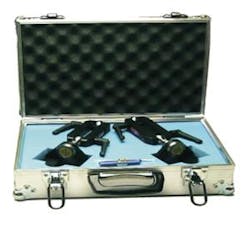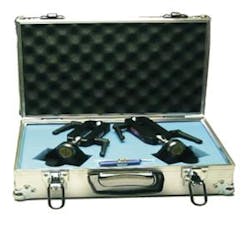More accurate shaft alignment
Fixturlaser has created a laser-based system that ensures accurate shaft alignment when rotating machines are idling or running. Ninety percent of rotating machine shafts are misaligned, and around 50% of machinery breakdowns are caused by inadequate alignment, said Mats Björkner, marketing manager.
"Most maintenance engineers offshore know the importance of laser alignment. What they don't always know is how much the dynamic movement affects alignment."
Fixturlaser's solution is its offline to running (OL2R) system, which makes it possible to measure and distinguish the relative position in static and dynamic conditions.
The system is user friendly, Björkner said, and the company has already received an order from Norsk Hydro for an offshore platform.
Shafts can be misaligned horizontally, vertically, or both, when machines heat up and expand.
The basic laser alignment system works on the traditional premise that a machine can be aligned in cold condition, leading to severe misalignment while running. The goal is to ensure the shafts are properly aligned for the running phase. Alignment is best done by measuring the location of the rotation axis in the static and dynamic phases, or offline and running.
"What we are doing with OL2R is determining the dynamic movement and then using the values obtained to effect alignment in cold condition with an offset, so as to achieve perfect alignment in running mode," he said.
null
Operated by one person, OL2R uses a handheld display unit and a fixture hooked up to two transmitter detector units. The unit sends dual directional laser beams to measure how two shaft rotational centers are placed in relation to each other. The handheld display evaluates and stores the measurements for each machine in offline and online conditions.
"We use the rotational center as the reference," Björkner said.
The measurements are used to align the machine, and the new position is documented.
Past methods of aligning machines involved either a straight edge, dial gauge, or laser alignment.
Periodically correcting misalignment leads to increased machine lifetime due to less wear on mechanical components and fewer vibrations. In addition, good alignment contributes to increased production capacity, energy savings, and increased product quality.
For more information, contact Mats Björkner, Fixturlaser. Tel: +46 31 706 28 57; fax: +46 31 706 28 50; [email protected]; www.fixturlaser.se.

